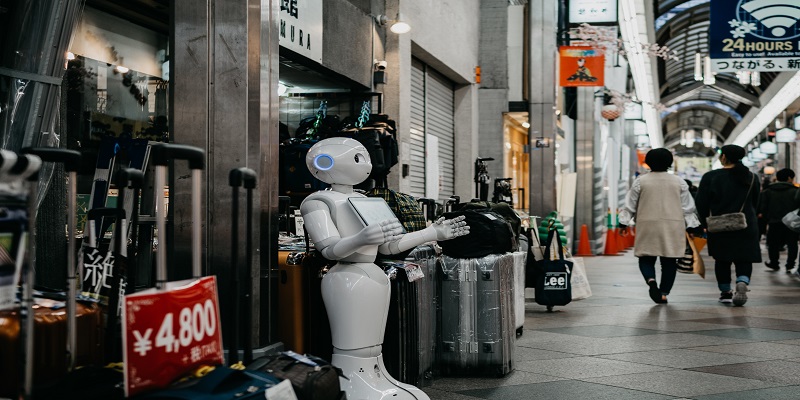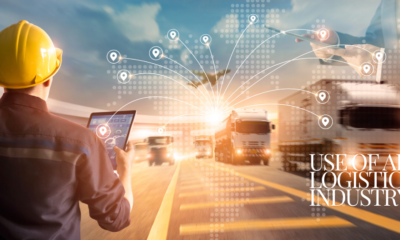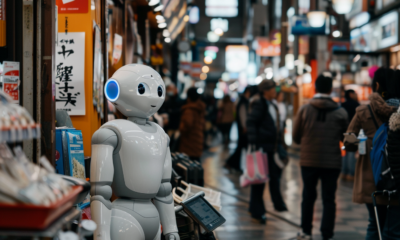Artificial Intelligence
The Rise of AI: How Technology is stealing jobs from Workers

Welcome to the age of Artificial Intelligence, a time when machines are growing increasingly more intelligent. From self-driving cars to chatbots, AI is altering industries across the globe, raising concerns about its impact on the job market. In this blog post, we will examine this issue further – how AI is changing the face of employment and what steps everyone can take to remain competitive. So let’s dive deep into this crucial topic!
What is artificial intelligence and how is it being applied to the job market today?
AI, a branch of computer science that concentrates on developing intelligent agents, has made remarkable progress in the sphere of machine learning. This subset of AI focuses on formulating algorithms that can learn independently and become better over time. The utilization of AI is endless; from voice and image recognition to predictive analytics – all are valuable applications in modern life. Nonetheless, there is apprehension that AI will eventually replace people in their respective occupations.
AI’s impact on jobs: examples
Artificial intelligence is taking over many jobs that were once done by humans. As AI technology improves, this trend is likely to continue. Examples of jobs that are being taken over by AI include:
Customer service: Artificial intelligence chatbots are increasingly being used for customer service inquiries. They can answer a wide range of questions and often do so more efficiently than human customer service agents.
AI systems are now capable of performing data entry tasks just as well as humans, and sometimes even faster, which is a relatively low-skill task often outsourced to countries with lower labor costs.
With the advent of natural language processing (NLP), AI systems can now produce written content that is indistinguishable from human writing. Due to this, so-called “content farms” have emerged, where AI systems are used to create large quantities of low-quality content.
Workers at Amazon’s warehouses: Workers have complained about long hours and low pay at Amazon’s warehouses in recent times. Conditions in Amazon’s warehouses have been described as “dehumanizing.”
There is a possibility that Amazon’s warehouses could soon be staffed by robots rather than humans. The company is already testing robots in some of its facilities, and it is planning to deploy them more widely in the future.
Some Amazon warehouse workers may lose their jobs altogether, while others may find their roles changed or reduced. As robots become more capable, they may eventually replace human workers in other sectors as well.
Employees of the Google Duplex call center: With Google Duplex, you can make calls to businesses on your behalf using Google Assistant. The call center workers who handle these calls are specially trained to understand and respond to the conversation just as if they were from the business.
A Google Duplex call center employee is the face of the company. They interact with customers and clients and are responsible for ensuring that the experience is positive. As a result, they need to be able to address any customer concerns or questions.
Employees of the Google Duplex call center are well-paid and receive excellent benefits. The average salary for a Google Duplex call center employee is $70,00 per year. Google also offers health insurance, dental insurance, and 401k plans.
With the increased use of robots and self-driving vehicles, many jobs traditionally performed by humans are now being automated as a result of the rise of artificial intelligence. Artificial intelligence is likely to continue to be used by companies to increase efficiency and reduce costs in the future.
With thousands of workers losing their jobs to automation, this shift has already had a significant impact on the workforce. It is likely that more jobs will be replaced by machines in the future. As a result, many workers will find it difficult to find new employment.
In addition to reducing accidents and errors, automation can also improve worker safety, which can result in faster deliveries and shorter customer wait times.
While automation may lead to job losses in the short term, it may also improve efficiency and productivity in the long term.
Chatbots replace customer service agents: The rise of artificial intelligence (AI) is resulting in the replacement of customer service agents by chatbots. The purpose of chatbots is to simulate human interaction. Typically, they are used to automate customer service tasks, including answering frequently asked questions, providing product recommendations, and handling complaints.
A growing number of customer service tasks that human agents previously handled can now be handled by chatbots. The number of customer service jobs is decreasing as a result. By 2023, Rakuten plans to replace 10,000 of its customer service employees with AI, for example, replacing many of its human customer service agents with chatbots.
It is not surprising that companies are replacing human customer service agents with chatbots. Chatbots are available 24/7 and do not require breaks or vacations. They can also handle multiple requests at one time. Furthermore, chatbots can often be more efficient and cost-effective than human agents, particularly if the query or task is simple.
However, there are some disadvantages to using chatbots as well. Occasionally, they may have trouble understanding natural language and give incorrect or off-brand responses. Furthermore, they may be incapable of handling complex queries or requests requiring emotional intelligence or empathy. For now, a,t least, human customer service agents still play an important role in customer service.
Driverless cars: As one of the most exciting applications of artificial intelligence, self-driving cars have the potential to revolutionize transportation, making it safer and more efficient. However, they may also put millions of drivers out of work.
Over the next few years, autonomous cars are likely to lead to widespread job losses for human drivers. Over 3 million professional drivers are employed in the United States alone, in industries ranging from trucking to taxis. Self-driving cars may replace some jobs, but others will simply disappear.
It is already apparent that this technology is having an impact on employment. Uber announced in 2017 that it would launch a fleet of self-driving cars in Pittsburgh. Human drivers at the company were deeply unimpressed by the move, which threatened their jobs.
As autonomous cars become more prevalent, we can expect job losses in the driving sector, but AI is likely to cause unemployment across a wide range of industries as well.

AI Takeover and the Future of Work: Pros and Cons
The future of work is a hot topic these days, as many people wonder how automation and artificial intelligence (AI) will impact their jobs. While there are some concerns about job loss due to AI, there are also many potential benefits that should be considered. Let’s take a look at both the pros and cons of an AI takeover of the workforce.
PROS:
AI can help to increase efficiency and productivity in the workplace, which is one of the main advantages. For example, if you’re running a manufacturing plant, you can use robots to handle tasks that are repetitive or unsafe for humans. This frees up your employees to focus on other tasks that require creativity and ingenuity.
Automation can also reduce labor costs. For example, if robots or AI-powered machines replace human workers, you won’t need to pay salaries and benefits. This can result in long-term savings for your company.
By providing data-driven insights that humans may not be able to see on their own, AI can also be used to improve decision-making in the workplace. You could, for example, use AI to make the best decision possible if you’re trying to decide which product to manufacture based on market trends and customer behavior.
CONS:
The loss of jobs is one of the biggest problems
Society’s impact
It is expected that the rise of artificial intelligence will continue to have a profound impact on society. Many jobs that were once performed by humans are now performed by machines. In addition to increased unemployment, wage stagnation, and income inequality, this displacement of workers by machines can also have negative consequences for society.
There are those who argue that AI will cause an increase in unemployment as more and more jobs are taken over by robots. While it is true that some jobs will be replaced by AI, there is also a possibility that new jobs will be created. The creation of robots that can perform certain tasks will require people to design, maintain, and repair these robots. Thus, while some jobs may be lost to AI, others may emerge as a result.
As machines become better at performing tasks that were once performed by workers, the demand for human labor decreases, resulting in a stagnation or even decline in wages. As a result, income inequality can increase since those with capital (the machines) reap the rewards while those with workers’ salaries stagnate or decline.
In the coming years, the rise of artificial intelligence will certainly have a profound impact on society. While there may be some positive effects, such as the creation of new jobs, there may also be some negative effects, such as increased unemployment and wage stagnation.






























